

In China, almost every major city has a subway, new, clean, and graffiti-free. Even though most riders are Chinese, the speaker system makes announcements in both Mandarin and British-accented English. At each stop, passengers are reminded to “mind the gap” between the platform and train.
“Mind the gap” is good advice also for Americans who have not visited China lately. During a recent three-week, six-city trip around China, I was surprised by its widespread economic prosperity—no longer based on cheap labor or exports. Flights between cities were full—not of foreign tourists but almost entirely of Chinese travelers. The lobby of the fanciest hotel in Shanghai—the Grand Hyatt in an 88-story skyscraper—was packed with locals eager to pay US$200 or more for a single night of luxury. The view from the high-speed train showed large-scale agribusiness, highly mechanized, and block after block of high-rise apartment buildings ready to house the farmers now leaving once-grueling jobs in the fields. What a contrast from China’s crowded countryside in the 1980s, when I covered the country’s economy for Business Week. This time, I didn’t see a single charming coolie hat or water buffalo.
Common American perceptions of China—fueled by then-candidate Donald Trump’s campaign rhetoric of unfair trade practices—are sadly out of date. More than 81 percent of China’s GDP is now fueled by its own domestic demand, not by Walmart’s made-in-China toys and sporting goods. That’s up from 64 percent ten years ago. Wages are rising in China, so that cheap-labor factories are forced to relocate to Mexico or Vietnam. Most of my husband’s relatives, poor thirty years ago, now own several condos and new cars. One just bought a second home on the tropical island of Hainan. Another invited us to a luxurious wedding in Nanjing with a huge banquet, gorgeous bridal outfits, and live entertainment with a professional singer, bubbles, and a stage show.
What really struck us was how well-off ordinary Chinese are now. My husband’s nephew, raised in a rural home with no running water, now owns a Nanjing company selling sound-proof booths for hearing tests. A friend’s son, once unable to gain college admission in China, now sells his own brand of cosmetics and employs two hundred people. My husband’s niece’s husband quit his job as a newspaper editor to run a winery started. He produces two thousand bottles of red wine, and the quality—as judged by our wine-happy American relatives—is up to international standards. These products are all sold only in China. With an annual growth rate of 6.7 percent and a population of 1.37 billion, who needs to think about exports? Our San Francisco son-in-law expressed envy that Chinese entrepreneurs faced such obvious odds of success.
Construction cranes dot the skyline of China’s major cities—too many to count, as the urban population booms. We rode to the top of the 128-story Shanghai Tower, the world’s second tallest building; it’s higher than any skyscraper in the United States. Highways are packed with Mercedes, BMWs, Toyotas, Fords, and—one of the most prestigious models—Buicks. Most are made in China, with joint venture partners. Shiny shopping centers are popping up everywhere, many with imported designer brands like Gucci, Guerlain, Burberry, and TUMI. In Shanghai, we visited a Tesla dealership, next door to a shop selling high-end drones. A huge two-story Apple store dwarfed the one at home, and at a Sony store we tried out the latest virtual reality headset. Even Chinese tea and pineapple cakes are packaged as high-end products.
 |
 Magnificent view of Nansha Islands in South China Sea
Magnificent view of Nansha Islands in South China Sea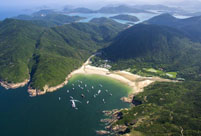 Aerial view shows scenery in Hong Kong
Aerial view shows scenery in Hong Kong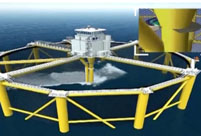 China builds world’s first offshore fish farm
China builds world’s first offshore fish farm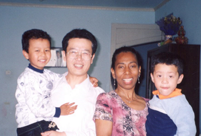 A Foreigner's Chinese Dream and Love for China
A Foreigner's Chinese Dream and Love for China 5,000-year-old Chinese beer recipe goes down a storm in US
5,000-year-old Chinese beer recipe goes down a storm in US World's first driverless rail transit system unveiled in Hunan
World's first driverless rail transit system unveiled in Hunan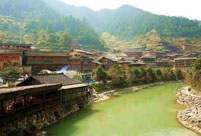 World's largest cluster of Miao villages in Guizhou
World's largest cluster of Miao villages in Guizhou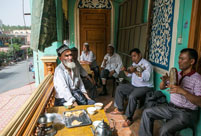 Daily life in Kashgar, China's Xinjiang
Daily life in Kashgar, China's Xinjiang Top 10 Chinese tech and engineering marvels
Top 10 Chinese tech and engineering marvels The power of 'She' in China
The power of 'She' in China Seven most beautiful art museums in China
Seven most beautiful art museums in China Top 10 European patent applicants in 2016
Top 10 European patent applicants in 2016 Chasing the world's prettiest flowers
Chasing the world's prettiest flowers US’ Asia strategy ‘unclear’
US’ Asia strategy ‘unclear’
 China steps up clean energy generation efforts
China steps up clean energy generation efforts
 London attack exposes gaps in anti-terror effort
London attack exposes gaps in anti-terror effort
 Horrible effects of global warming
Horrible effects of global warming
Day|Week